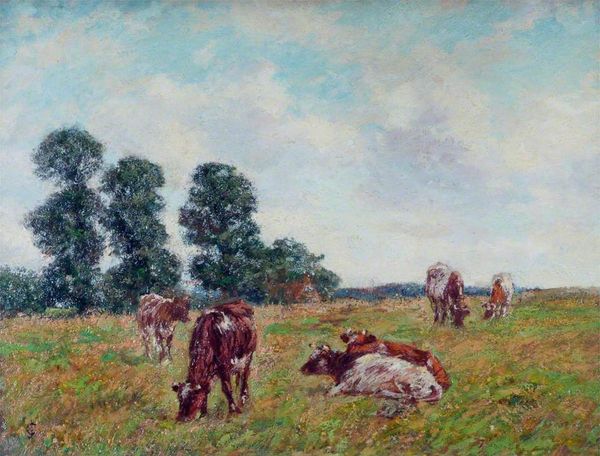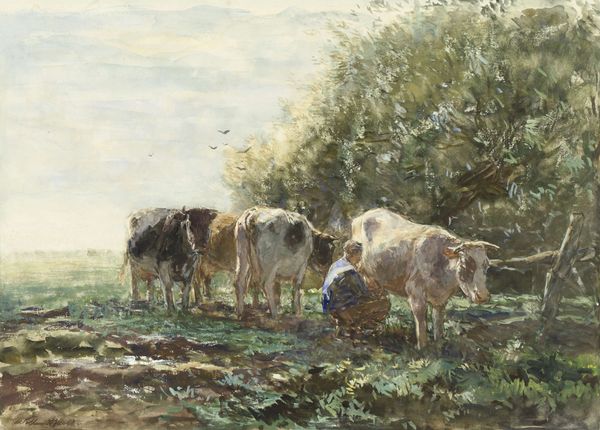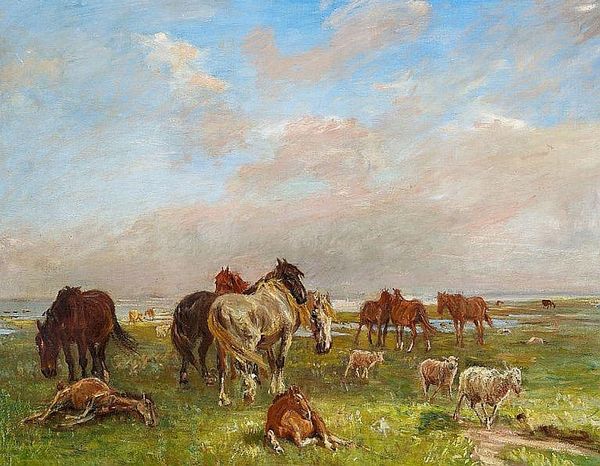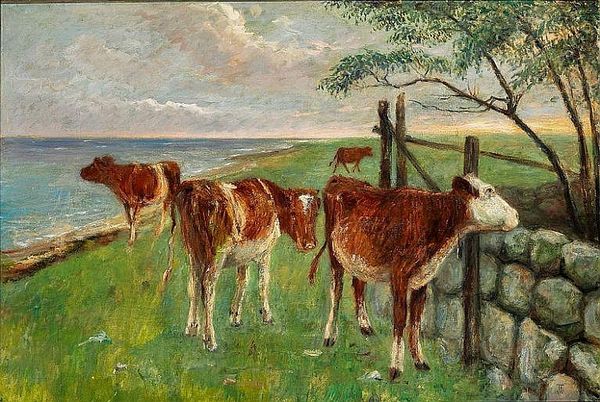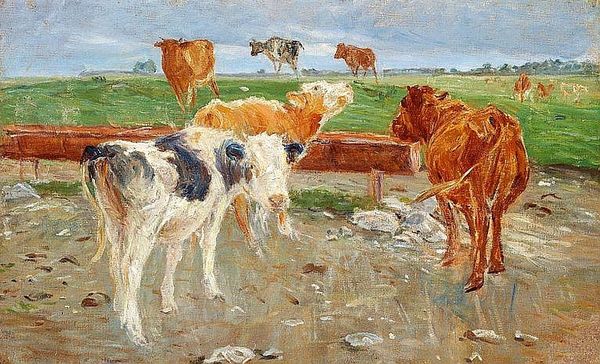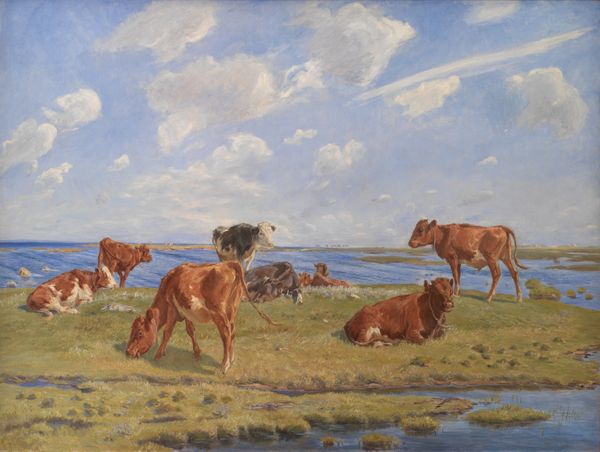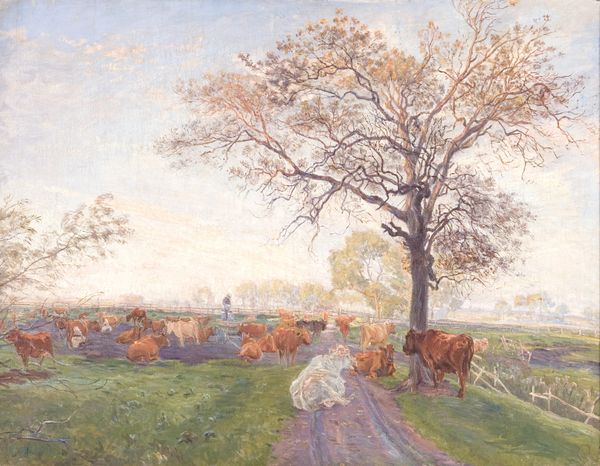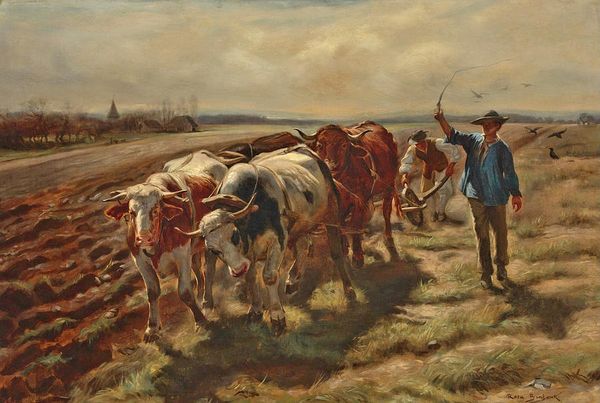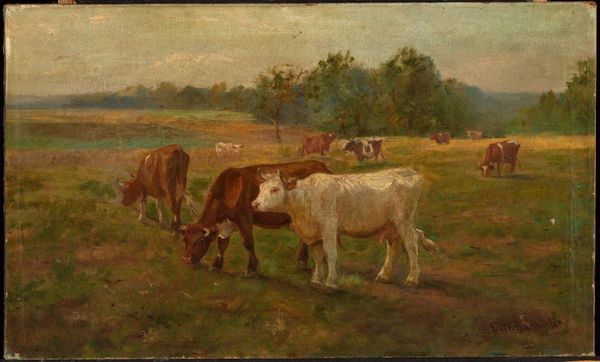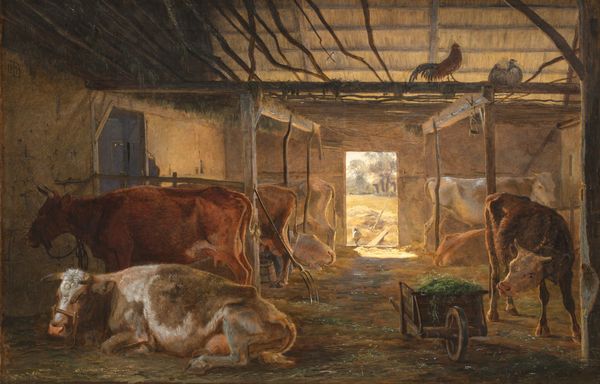
Copyright: Public domain
Editor: We’re looking at "Malkeplads ved Dyrehavegård," painted in 1901 by Theodor Philipsen, rendered in oil on canvas. The subject is cattle. What immediately strikes me is how the artist creates visual balance between the dark mass of the foreground tree and the lighter, open space of the background landscape. What do you make of the formal relationships in this painting? Curator: Indeed, observe the dynamic interplay between light and shadow. The composition is meticulously structured, with the robust tree serving as a visual anchor, its branches extending to frame the open sky. Philipsen employs a limited palette, focusing on earthy tones and subtle gradations of color to convey a sense of depth and atmosphere. Note how the directional lines of the tire tracks lead the eye into the picture plane. Editor: So the formal construction—the arrangement of forms, colors, lines—communicates more than just the subject matter? Curator: Precisely. It's not merely a depiction of cattle in a landscape; it is an exploration of visual elements, and a sophisticated study of light, depth, texture and tone. Consider how Philipsen’s handling of paint—thick impasto in some areas, thin washes in others—contributes to the painting’s overall texture and vibrancy. Editor: The way he varies his brushwork, the contrast of those tactile surfaces really energizes the scene. It’s less about the specific cows and more about the abstract patterns they contribute to the overall composition, am I right? Curator: You’ve articulated that insight well. Editor: I see it now. It's about using cows to achieve a study of nature’s pictorial language, more than a farm scene. I won’t look at this type of art the same way. Curator: Indeed. And I think you’ve honed in on key features that unlock access into reading other artworks with greater sophistication.
Comments
No comments
Be the first to comment and join the conversation on the ultimate creative platform.
